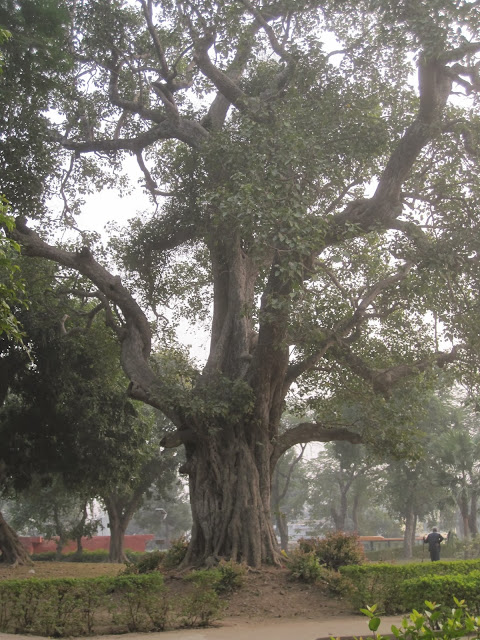 |
| Tree in the archeological park at Shravasti |
 |
| Elephant encountered on the road from Vaishali to Kushinagar |
These stories of the Buddha' former lives occupy a similarly magical world of transformation from animal to human, passing from one life to another over many generations of rebirths. The Ven. Bhikkhu Bodhi has written this to accompany the three volumes.
'Whereas Western intellectuals seek the essence of Buddhism in its doctrines and meditation practices, the traditional Buddhists of Asia absorb the ideas and values of their spiritual heritage through its rich narrative literature about the Buddha and his disciples. The most popular collection of Buddhist stories is, without doubt, the Jātakas. These are the stories of the Buddha's past births, relating his experiences as he passed from life to life on the way to becoming a Buddha. At times he takes the form of a bird, at times he is born as a hare, a monkey, a prince, a merchant, or an ascetic, but in each case he uses the challenges he meets to grow in generosity, virtue, patience, wisdom, and compassion. This anthology of Jatakas, ably told by Ken and Visakha Kawasaki, remains faithful to the original yet presents the stories in clear and simple language. It thereby makes the Jātakas accessible even to young readers and to those for whom English is not their first language.
Thangka depicting Jataka Tales. Tibet 14th century
Reading the Jatakas and the Suttas the world of ancient India and the actual places the Buddha lived in, which formed the basis of my recent trip, come to life as they are often referenced within these texts. The sense of re-enchantment of the ordinary and everyday is one of the great pleasures derived from reading these stories as well as the insight into human psychology, nature and the wise council they contain like the Fables of La Fontaine and Aesop.



No comments:
Post a Comment